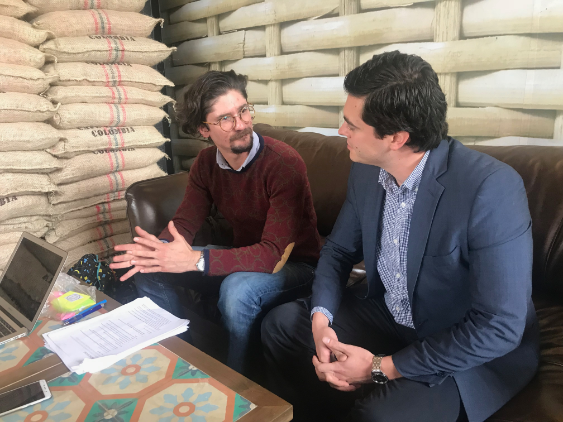Service Design
Experienced on a project led by Pamela Mead (VP of Design at DeliveryHero), who brought me in to assist, coordinate, survey, and analyze the results that define what would be an incredible delivery experience, all through the Service Design process.

Project X
Together with DeliveryHero and Insitum (an auditor and consultant), we decided to undertake a large-scale survey and execution project to gain a deep understanding of people's perceptions, needs, and ordering experience. This could help us visualize better interactions and inform the creation of new products, services, and strategies that strengthen our value proposition in Latin America. We called this project Project X, and its focus was on Human-Centered Design through Service Design.
I was involved in this project from start to finish, but I wasn't ultimately responsible. It was led by Pamela Mead (VP of Design at DeliveryHero).
The entire project lasted 3 months and involved travel throughout Colombia, Argentina, and Uruguay.
Challenges
Articulate local and global needs
Each country where the platform operates has its own needs, specific to its context. It's necessary to combine a global perspective with the specificities of each country to address and communicate common service attributes while maintaining a local perspective and language.
Achieving a consistent experience
Regardless of whether you use a marketplace model or your own logistics, the challenge is ensuring that the platform provides a consistent, high-quality experience for both users.
Compete in verticals
As I mentioned in the case of Brand Evolution, there are opportunities in every country to offer products other than food. However, the presence of competitors in this space makes it necessary to define the strategy to follow, the types of orders to enter, and the logistical decisions and investments to make.
Understanding people
User information exists. However, it is primarily quantitative and doesn't shed light on the reasons behind it. It has become necessary to gain a deeper understanding of the needs of people in each country and region in order to offer them what they need and provide a coherent response to potential problems.
Findings
For confidentiality reasons, I can't share my findings or discoveries, but thanks to this project, we've discovered countless new possibilities and problems we didn't see before, in addition to demystifying stereotypes, shifting paradigms, and more.

Goals
-
Conduct ethnographic and contextual research on users and non-users of ordering services to understand their current expectations and needs, validate hypotheses, explore new product and business ideas, and generate insights to inspire the vision of an amazing ordering experience.
-
Map the user journey through an ordering experience and identify mental models, value frameworks, user profiles, barriers, motivators, interactions, and opportunities within the ecosystem.
-
Conduct a series of workshops with HR teams to co-create a strategic experience vision and create inspirational documents to begin outlining the path to achieving that vision.
Methodology
Immersion
Interviews with key players within the company, from different areas (Logistics, Marketing, Design, Global Business) and countries (Argentina, Germany, Chile, Colombia and Uruguay).
Secondary research
About innovative delivery products and services around the world.
Ethnographic research
Qualitative research with users, non-users, and delivery service providers, through:
-
36 in-depth interviews (in-home)
-
20 diary studies
-
12 shadowing exercises
Collaborative analysis and ideation
-
Weekly statuses with the core team
-
2 weeks of analysis and content development (findings, insights, models)
-
2 days of analysis sessions
-
2 ideation workshops
Approach
The project takes a holistic approach to gaining a deep understanding of people's needs regarding delivery services and identifying opportunities to design an incredible experience.
Human Centered Design
The Human-Centered Design approach is a process that involves understanding and empathizing with the people for whom you are designing, with the goal of creating new solutions that adapt to their needs.
Service Design
It is the activity of planning and organizing the people, infrastructure, communications, and physical components of a service to improve its quality and the interaction between the service provider and customers. It allows for designing according to people's needs, so that the service is easy to use, competitive, and relevant to customers.
Question/Manifesto
How could DeliveryHero create an amazing delivery experience that people love and that drives business growth in the region?





